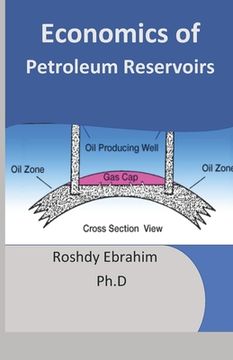Compartir
Economics of Petroleum Reservoirs (en Inglés)
Roshdy Ebrahim
(Autor)
·
Independently Published
· Tapa Blanda
Economics of Petroleum Reservoirs (en Inglés) - Ebrahim, Roshdy
S/ 88,97
S/ 177,94
Ahorras: S/ 88,97
Elige la lista en la que quieres agregar tu producto o crea una nueva lista
✓ Producto agregado correctamente a la lista de deseos.
Ir a Mis Listas
Origen: Estados Unidos
(Costos de importación incluídos en el precio)
Se enviará desde nuestra bodega entre el
Viernes 07 de Junio y el
Viernes 21 de Junio.
Lo recibirás en cualquier lugar de Perú entre 2 y 5 días hábiles luego del envío.
Reseña del libro "Economics of Petroleum Reservoirs (en Inglés)"
The geologic structure in which petroleum has been trapped and has accu-mulated, whether it was the source rock or the rock to which petroleum has migrated, is called the petroleum reservoir.Predictions of future shortages of oil began shortly after commercial production started in the late nineteenth century. In the first half of the twentieth century, there was national concern about imminent and irreversible shortages of oil on at least six occasions. In the 1950s M. King Hubbert, a geophysicist at Shell Development Company in Houston, developed a model of a cycle of production of finite nonrenewable resources that aimed to predict future production from analysis of production-to-date and estimates of the amount of remaining resource in the ground. In a series of publications Hubbert predicted that US oil production would peak by 1975 at the latest: actual peak production was in 1970. The peak in US production gave credence to Hubbert's methodology, which is now commonly referred to as the "Hubbert curve.Proven reserves are those reserves of petroleum that are actually found by drilling operations and are recoverable by means of current technology. They have a high degree of accuracy and are frequently updated as the recovery operation proceeds. They may be updated by means of reservoir characteristics, such as production data, pressure transient analysis, and reservoir modeling.Probable reserves are those reserves of petroleum that are nearly certain but about which a slight doubt exists. Possible reserves are those reserves of petroleum with an even greater degree of uncertainty about recovery but about which there is some information. An additional term potential reserves is also used on occasion; these reserves are based on geological information about the types of sediments where such resources are likely to occur and they are considered to represent an educated guess. Then, there are the so-called undiscovered reserves, which are little more than figments of the imagination. The terms undiscovered reserves or undiscovered resources should be used with caution, especially when applied as a means of estimating reserves of petroleum reserves. The data are very speculative and are regarded by many energy scientists as having little value other than unbridled optimism.
- 0% (0)
- 0% (0)
- 0% (0)
- 0% (0)
- 0% (0)
Todos los libros de nuestro catálogo son Originales.
El libro está escrito en Inglés.
La encuadernación de esta edición es Tapa Blanda.
✓ Producto agregado correctamente al carro, Ir a Pagar.

